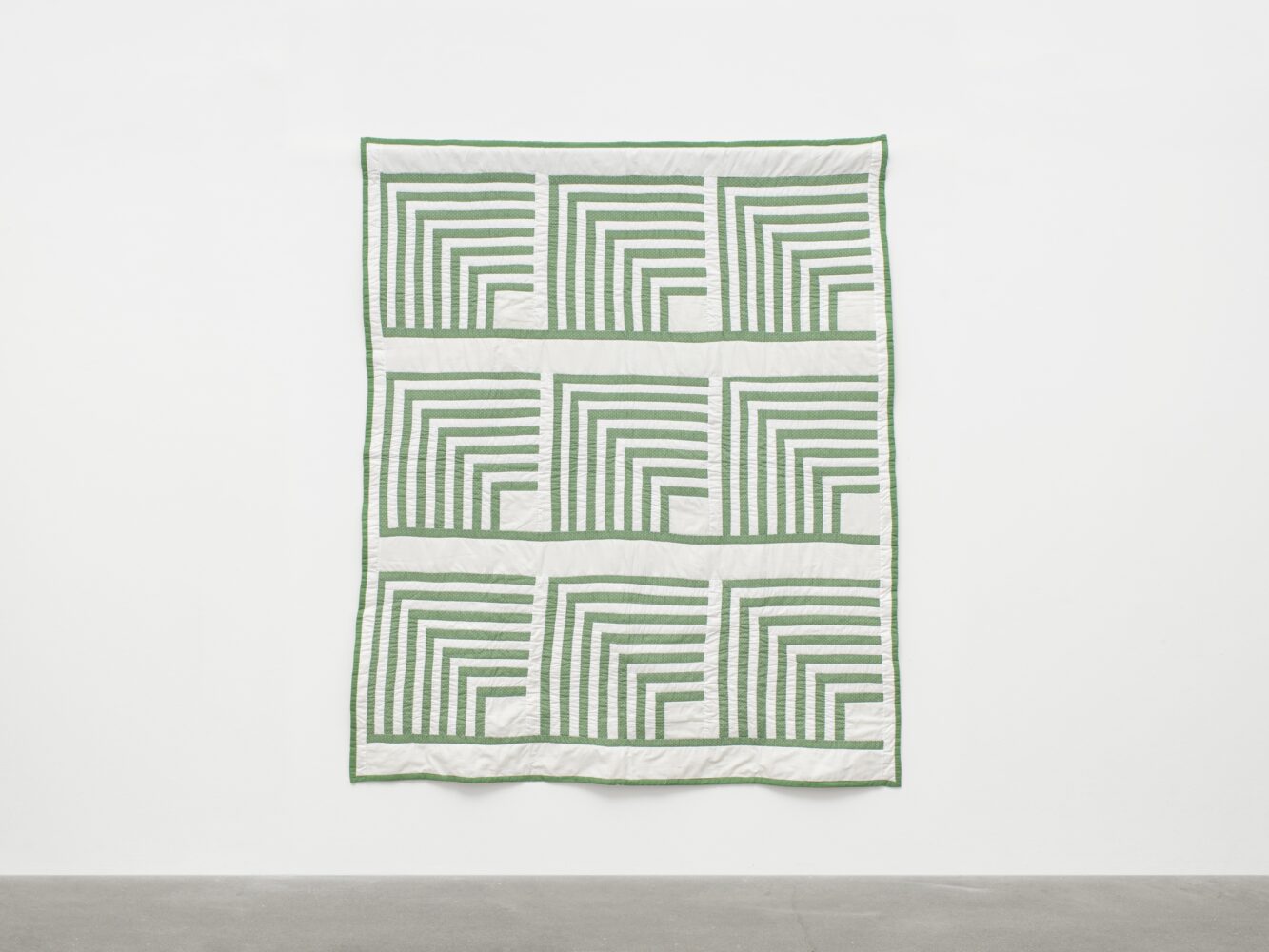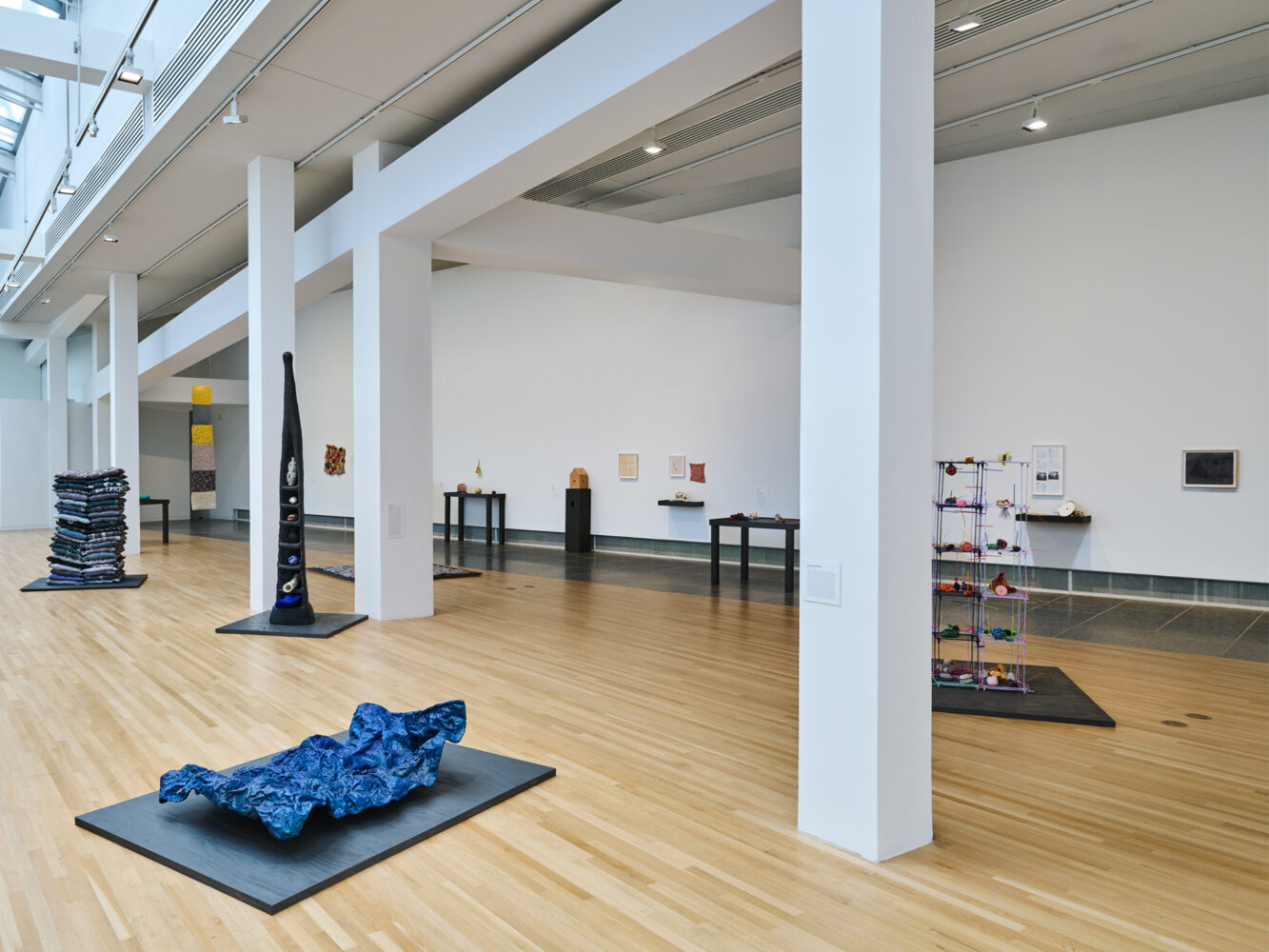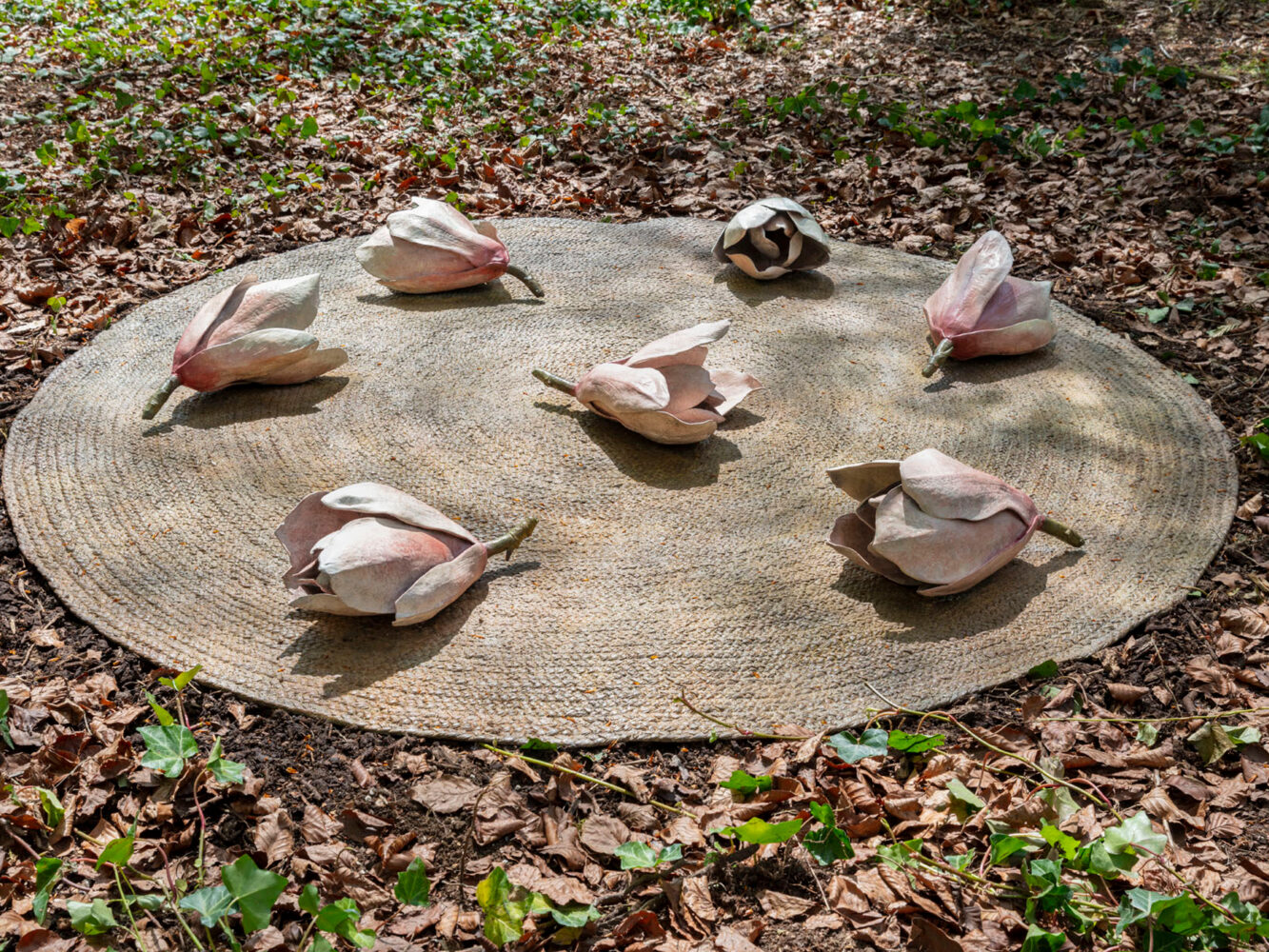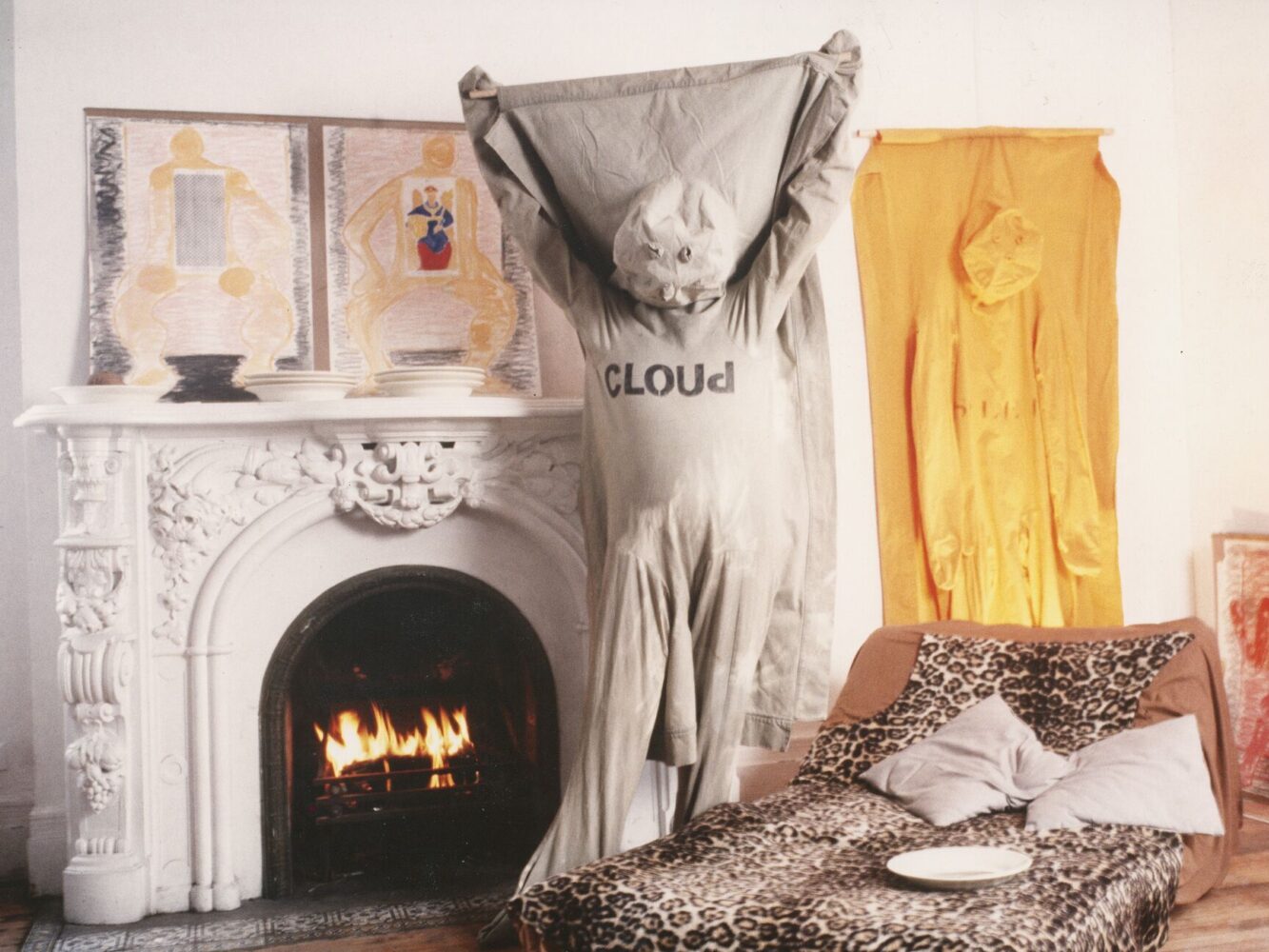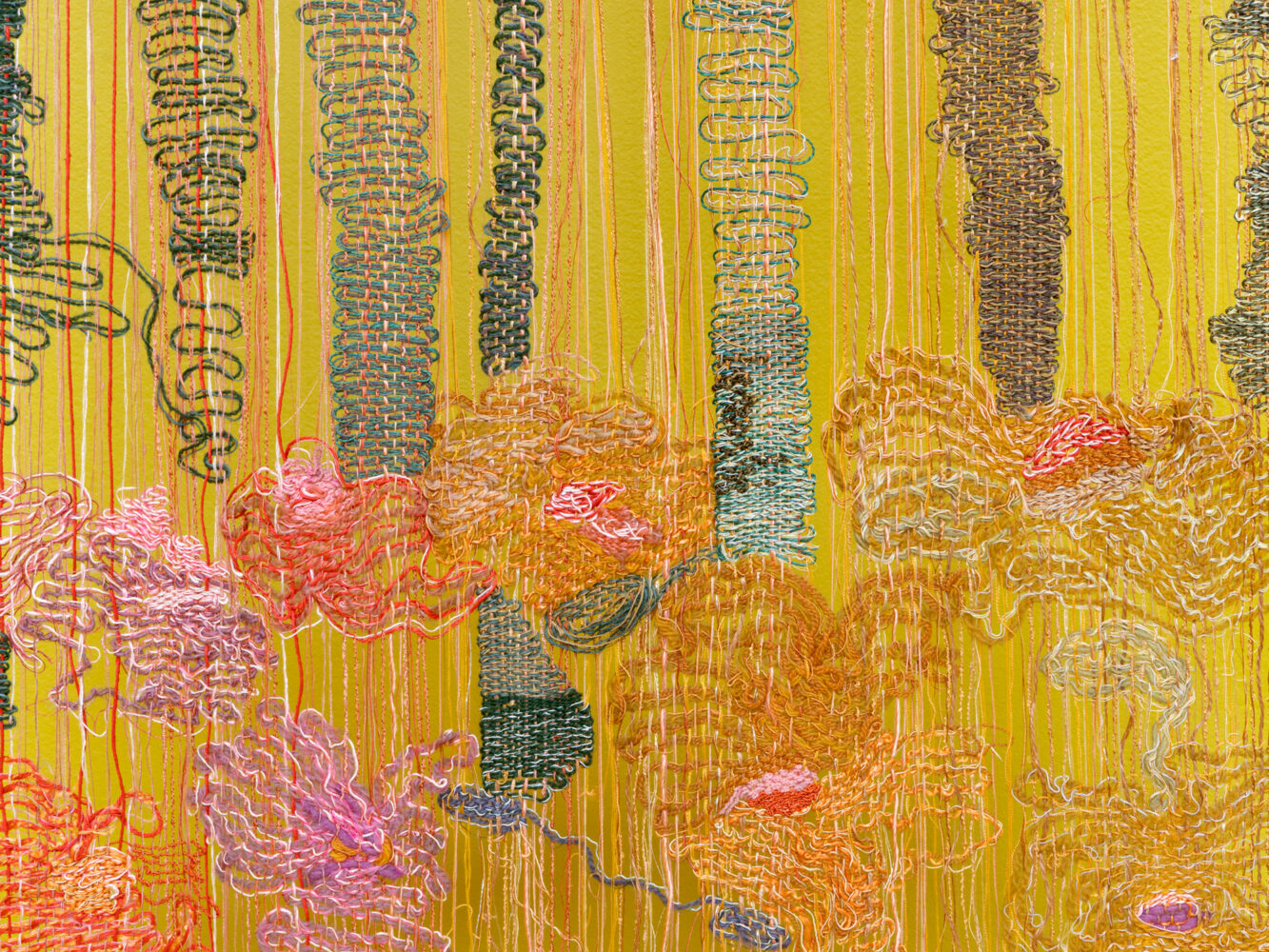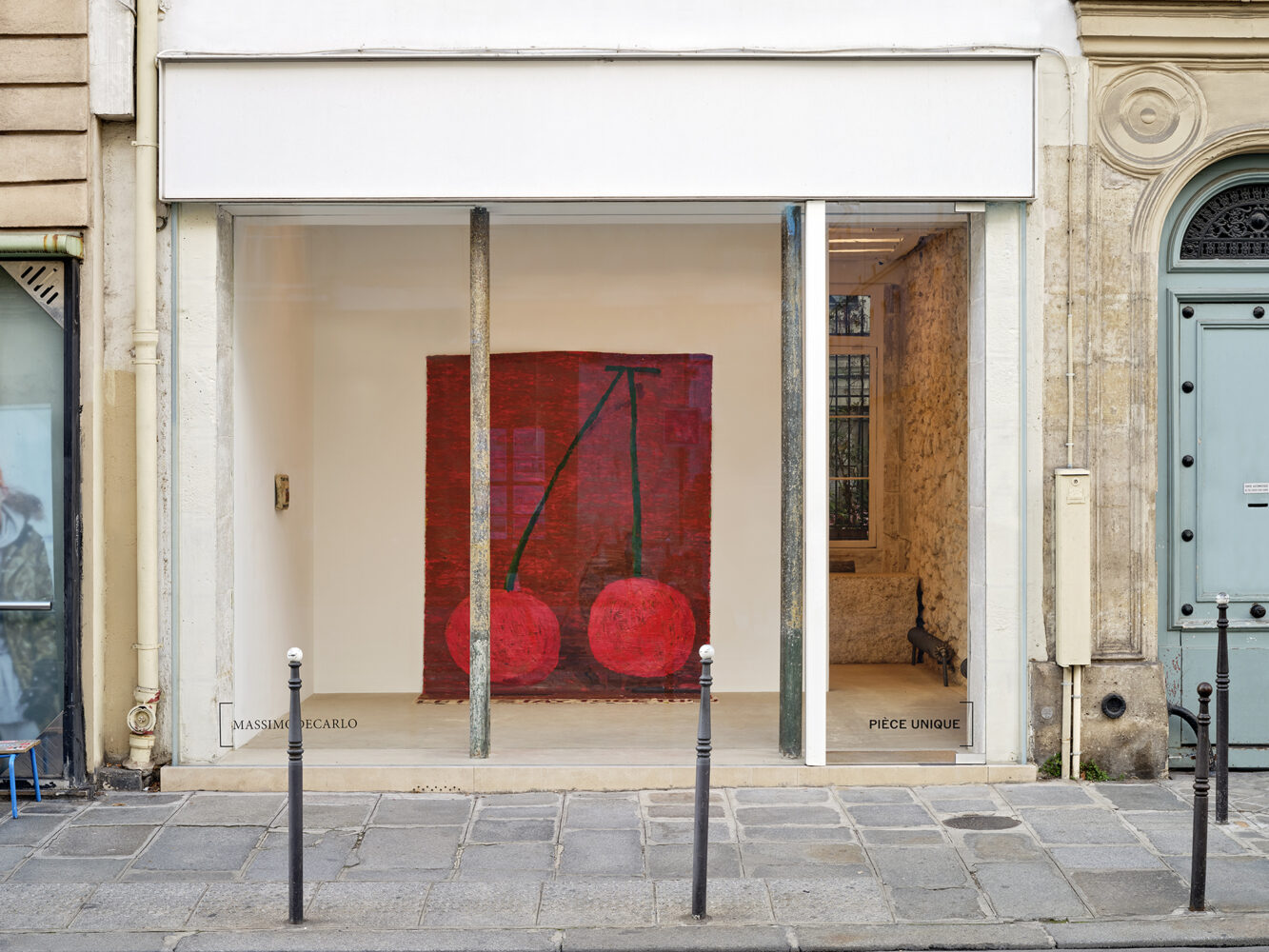Sheila Hicks
in ‘La vie des tables’, Le Crédac, Ivry-sur-Seine
20 September 2020 – 24 January 2021

Sheila Hicks, Je voudrais être une vague, 2020. Courtesy: © Sheila Hicks / Adagp, Paris, 2020; photo: Marc Dommage
Sheila Hicks is included in ‘La vie des tables’ at Le Crédac, Ivry-sur-Seine.
Ideas often spring up from a walk, from a swim in the crystal-clear water of a lake, from eating a slice of bread and jam, during a sleepless night, while playing a Memory game, or reading inspiring texts in which new, solidly built ideas emerge. When they arise, one has to pinch them hard enough to carry them all the way to the work table. Whether it’s a kitchen table, a workbench or a desk – tables embody the place where intuitions take shape.
The desire to invite artists to exhibit works imagined for such surfaces sprung up a while ago. It expands my reading of Lucy R. Lippard’s texts, wherein the American activist and feminist writer and Art Historian points out that women artists all too rarely enjoy the physical space that is required to create, and end up having to work in domestic spaces — mainly on their kitchen table.
This idea was also nurtured by an artwork by Hugues Reip, entitled 0,25 (1990-91) , which consists in a series of 25 tiny sculptures made spontaneously using the inside of bread, rubber, paper clips, nails, and which were presented to the public on formica top kitchen tables, the domestic symbol of the 1950s.
This exhibition seems necessary to us after this spring deprived of social interactions, exchanges and proximity, It has the value of a project of resistance and attention to domestic and private artistic practices. This lockdown period has forced creators to return to modest and DIY artistic practices, while for others this is a regular practice. Focusing on the relationship that artists have with their “work tables” - refuge, playground or passage - we are inviting artists to submit their pieces as one sends a letter. They may have been conceived during the recent period of confinement or in response to this invitation, they may be spontaneous, modest, constructed or sophisticated.
‘La vie des tables’ (The Life of Tables) therefore adjusts itself to reality. It adapts to the constraints connected to distancing and it updates, both playfully and out of necessity, Mail Art, which emerged in 1962 with the creation by Ray Johnson of the New York Correspondence School of Art. As the name suggests, Mail Art circulated mainly by post and in a spontaneous manner. This ‘movement’ launched the notion of attitude as an object – a founding concept of contemporary art in the 1970s, which still remains relevant today.




